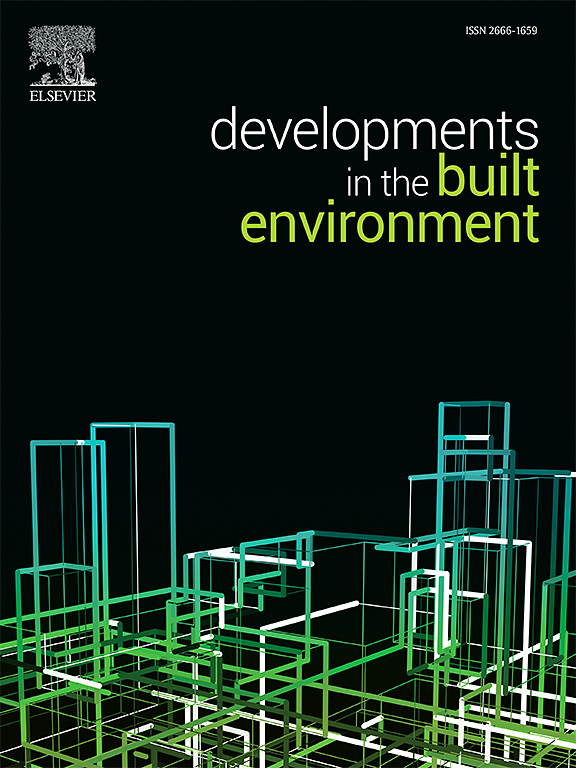增强建筑的可持续性:含有硅灰和霞石正长岩的活性矿渣粘合剂的机械、碳排放和微观结构分析
IF 8.2
2区 工程技术
Q1 CONSTRUCTION & BUILDING TECHNOLOGY
引用次数: 0
摘要
这项研究首次对利用活性矿渣、硅灰和霞石正长岩开发粘合剂进行了全面调查,解决了对传统硅酸盐水泥的可持续替代品的迫切需求,传统硅酸盐水泥以其高碳排放而闻名。系统地将这些人造粘合剂的性能与常规水泥粘合剂进行比较,以评估其机械和环境性能。固化28天后,通过扫描电子显微镜(SEM)和能量色散x射线(EDX)测试评估其抗压、拉伸和弯曲强度、吸水率和微观结构特征。用硅灰(水胶比为0.45)活化的粘结剂的抗压、抗拉和抗弯强度分别为45 MPa、4.7 MPa和4.9 MPa,而用霞石正长岩活化的粘结剂的强度较低,分别为37 MPa、3.3 MPa和3.5 MPa。在相同条件下,水泥粘结剂的强度分别为50 MPa、4.9 MPa和5.2 MPa。微观结构分析表明,水泥粘结剂的密度和钙硅比最高,其次是硅粉活化的粘结剂。值得注意的是,用霞石正长岩活化的粘结剂,与氢氧化钠以1:2的比例配制,被证明是最可持续的,每单位碳足迹为986千克二氧化碳,显著低于水泥粘结剂的1984千克二氧化碳。这些发现强调了对可持续建筑材料的迫切需求,并有助于解决与水泥生产有关的环境问题。本文章由计算机程序翻译,如有差异,请以英文原文为准。

Enhancing sustainability in construction: Mechanical, carbon emission, and microstructural analysis of activated slag binders incorporating silica fume and nepheline syenite
This research presents the first comprehensive investigation into the development of binders utilizing activated slag, silica fume, and nepheline syenite, addressing the urgent need for sustainable alternatives to traditional Portland cement, which is known for its high carbon emissions. The performance of these manufactured binders was systematically compared to conventional cement binders to evaluate their mechanical and environmental properties. After 28 days of curing, tests assessed compressive, tensile, and bending strengths and water absorption and microstructural features via Scanning Electron Microscopy (SEM) and Energy Dispersive X-ray (EDX). The binder activated with silica fume (water-to-binder ratio of 0.45) achieved compressive, tensile, and bending strengths of 45 MPa, 4.7 MPa, and 4.9 MPa, while the binder activated with nepheline syenite showed lower strengths of 37 MPa, 3.3 MPa, and 3.5 MPa. The cement binder yielded strengths of 50 MPa, 4.9 MPa, and 5.2 MPa under the same conditions. Microstructural analysis indicated the highest density and calcium-to-silicon ratio in the cement binder, closely followed by the binder activated with silica fume. Binders activated with a 10 M sodium hydroxide solution exhibited superior performance compared to those with 15 M. Notably, the binder activated with nepheline syenite, formulated at a 1:2 ratio with sodium hydroxide, proved most sustainable, with a carbon footprint of 986 kg CO2 per unit, significantly lower than the cement binder's 1984 kg CO2. These findings underscore the urgent need for sustainable construction materials and contribute to addressing environmental concerns associated with cement production.
求助全文
通过发布文献求助,成功后即可免费获取论文全文。
去求助
来源期刊

Developments in the Built Environment
Multiple-
CiteScore
7.40
自引率
1.20%
发文量
31
审稿时长
22 days
期刊介绍:
Developments in the Built Environment (DIBE) is a recently established peer-reviewed gold open access journal, ensuring that all accepted articles are permanently and freely accessible. Focused on civil engineering and the built environment, DIBE publishes original papers and short communications. Encompassing topics such as construction materials and building sustainability, the journal adopts a holistic approach with the aim of benefiting the community.
 求助内容:
求助内容: 应助结果提醒方式:
应助结果提醒方式:


